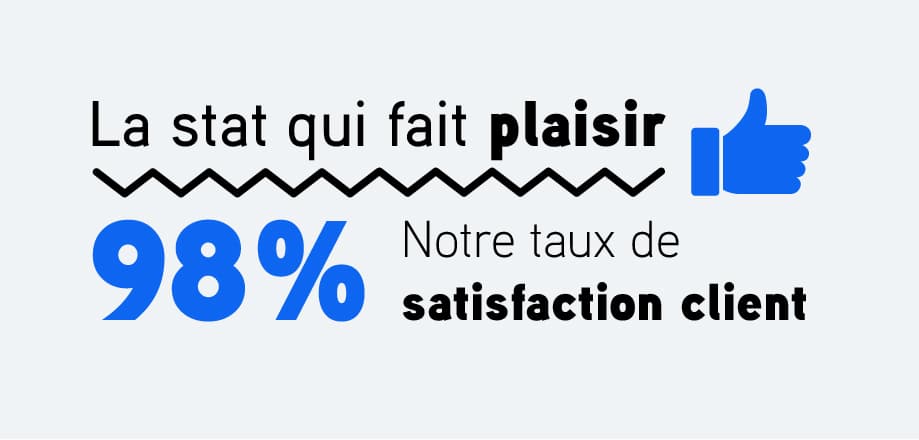Opening one’s email inbox only to be overwhelmed by ignored or deleted messages.A feeling of frustration in the face of this digital disorder is inevitable.This constant chaos can quickly become exhausting.
This overload of emails affects not only individuals but also businesses trying to communicate with their clients. When messages become too frequent or repetitive, engagement decreases, and interest gradually fades. Subscribers feel overwhelmed, leading them to unsubscribe or ignore future communications. This email fatigue can deteriorate the relationship between the brand and its customers, negatively impacting the performance of marketing campaigns. Understanding the underlying causes of this weariness is essential to develop effective strategies to prevent it. Adopting smarter, targeted methods can turn emails into an experience that recipients appreciate and anticipate.
In the current digital age, emails remain an essential tool for professional communication and marketing. However, a proliferation of messages can quickly lead to email fatigue, both for senders and recipients. This saturation can result in decreased engagement and harm relationships with subscribers. In this article, we will explore this phenomenon in depth and propose effective solutions to address it.
What is email fatigue?
Email fatigue manifests when subscribers feel overwhelmed or disengaged by the volume and frequency of received emails. This overload may be due to excessive repetition of marketing messages or a constant inundation of irrelevant communications. As a result, recipients may ignore, delete, or unsubscribe from mailing lists, diminishing the effectiveness of email campaigns.
A key factor in this fatigue is the user’s feeling of inefficiency in the face of a cluttered inbox. When subscribers receive too many messages, they experience frustration and mental exhaustion, reducing their willingness to engage with future emails.
Why does email fatigue occur?
Several factors can contribute to email fatigue. One of the main factors is the high frequency of sends. Sending emails too often can negatively impact the user experience, especially if messages are not sufficiently personalized or relevant.
Another factor is the repetitiveness of content. When subscribers receive similar messages repeatedly, they may become disinterested and lose the desire to open or read future emails. Additionally, the lack of personalization can also play a role, making emails feel impersonal and less engaging.
The expectations of subscribers also evolve over time. Different generations may have distinct preferences for email communication. For example, a study on publithings.com/les-fractures-generationnelles-dans-lemail-les-marketers-passent-ils-a-cote-de-lessentiel”>generational fractures in email reveals that marketers may sometimes overlook essential elements for certain cohorts, thereby exacerbating fatigue.
What are the effects of email fatigue?
Email fatigue can have significant repercussions on the performance of email marketing campaigns. Among the main effects are:
- Decrease in open rates: Emails are opened less frequently, thereby reducing message reach.
- Decrease in click rates: Fewer interactions with email content mean lower conversion.
- Increase in unsubscribes: Subscribers may choose to withdraw from mailing lists to reduce overload.
- Increase in spam complaints: Unsolicited or overly frequent emails may be marked as spam, affecting the sender’s reputation.
- Reduction in subscriber loyalty: A poor email experience can deteriorate trust and loyalty towards the brand.
These consequences not only diminish the effectiveness of campaigns but can also tarnish the brand image and hinder loyalty efforts.
How to detect email fatigue?
Identifying email fatigue is crucial for adjusting communication strategies. Here are some key indicators:
- Decline in open rates: A significant drop in email openings can signal a loss of interest.
- Decrease in click rates: Fewer clicks on links indicate a lack of engagement with content.
- Increase in unsubscribes: A growing number of unsubscribes suggests that subscribers are tired of emails.
- Rise in spam reports: Frequent spam complaints affect reputation and email deliverability.
- Increase in inactive subscribers: A large number of subscribers who do not respond to emails signals disengagement.
By monitoring these metrics, marketers can take proactive steps to prevent and mitigate email fatigue.
How to remedy email fatigue?
To combat email fatigue, several strategies can be implemented. Here are proven methods to revitalize your email campaigns:
1. Clean your email list
A clean email list is essential to maintain a good engagement rate. Remove inactive subscribers and invalid email addresses. This helps target an audience that is genuinely interested and reduces the risk of being marked as spam.
2. Segment your audience
Segmentation involves dividing your subscriber list into more specific groups based on criteria such as age, location, interests, etc. This approach allows for sending relevant and personalized messages, thereby increasing engagement.
3. Personalize emails
Personalization goes beyond including the recipient’s name. Use behavioral data to tailor content according to subscribers’ preferences and past actions. For example, recommending products based on previous purchases can increase conversion rates.
4. Write engaging subjects
The subject line of the email is the first interaction with the subscriber. An engaging subject can increase open rates. Use short phrases, create a sense of urgency, and ensure that the subject reflects the content of the email.
5. Create captivating content
The content of the email should be clear, concise, and relevant. Provide added value by offering useful information, practical tips, or exclusive offers. Engaging content encourages subscribers to interact and return.
6. Optimize email design
An attractive and responsive design is crucial. Use high-quality images, readable fonts, and clear calls to action (CTA). Ensure that the email displays correctly on all devices, especially mobile.
7. Determine optimal frequency and timing
Sending emails at the right frequency and timing can reduce fatigue. Analyze subscriber behavior to identify the times they are most receptive. Avoid overloading their inbox by spacing out sends.
8. Allow preference customization
Give your subscribers the option to customize their preferences regarding frequency and type of content. This gives them a sense of control and increases their satisfaction, thus reducing unsubscribe risks.
9. Use email automation
Automation allows sending targeted emails based on specific subscriber actions, such as cart abandonment or recent sign-ups. This ensures that messages are relevant and timely, thus improving engagement.
10. Diversify email campaigns
Vary the type and purpose of your emails to maintain subscriber interest. Combine newsletters, promotional offers, product updates, and event invitations to provide diverse and engaging content.
11. Invest in re-engagement sequences
For inactive subscribers, re-engagement sequences can be effective. Send dedicated emails to rekindle their interest, such as special offers or requests for feedback, to bring them back into the engagement cycle.
12. Gather feedback
Regularly solicit feedback from your subscribers to understand their needs and expectations. Use surveys or polls embedded in your emails to gain valuable insights and adjust your strategies accordingly.
13. Monitor engagement metrics
Continuously analyze the performance of your email campaigns by monitoring key indicators such as open rates, click rates, unsubscribe rates, and bounce rates. This data will help you identify weaknesses and optimize your emails for better results.
Integrate advanced strategies to prevent email fatigue
Beyond basic strategies, it is essential to adopt advanced approaches to prevent email fatigue. Here are some additional methods:
Smart automation
Smart automation uses algorithms and behavioral data to send emails at the optimal moment. For example, platforms like GetResponse offer features for advanced personalization and dynamic segmentation that can greatly enhance campaign effectiveness.
Interactive content
Incorporate interactive elements such as polls, quizzes, or videos into your emails. This makes the content more engaging and encourages subscribers to interact actively, thereby reducing the monotony of communications.
Regular A/B testing
Conduct A/B tests to experiment with different versions of your emails. Whether for subject lines, content, or CTAs, these tests allow you to determine what resonates best with your audience and optimize your campaigns accordingly.
The benefits of combating email fatigue
Adopting strategies to reduce email fatigue presents many advantages. Not only does it improve engagement and conversion rates, but it also strengthens relationships with subscribers. By providing relevant and personalized content, you build lasting loyalty and enhance your brand image.
Furthermore, by optimizing your campaigns to avoid saturation, you increase the deliverability of your emails, ensuring that your messages always reach your subscribers’ inbox. This translates to a better reputation for your domain and increased effectiveness of your marketing efforts.
To delve deeper into the topic of generational fractures in email marketing and how to address them, check out this article on publithings.
Email fatigue is a major challenge for modern marketers. By understanding its causes and implementing effective strategies, it is possible to revitalize your campaigns and maintain the engagement of your subscribers. Adapt to your audience’s preferences, personalize your communications, and regularly monitor your performance to ensure the continued success of your email marketing efforts.








